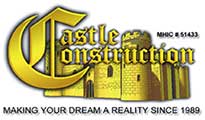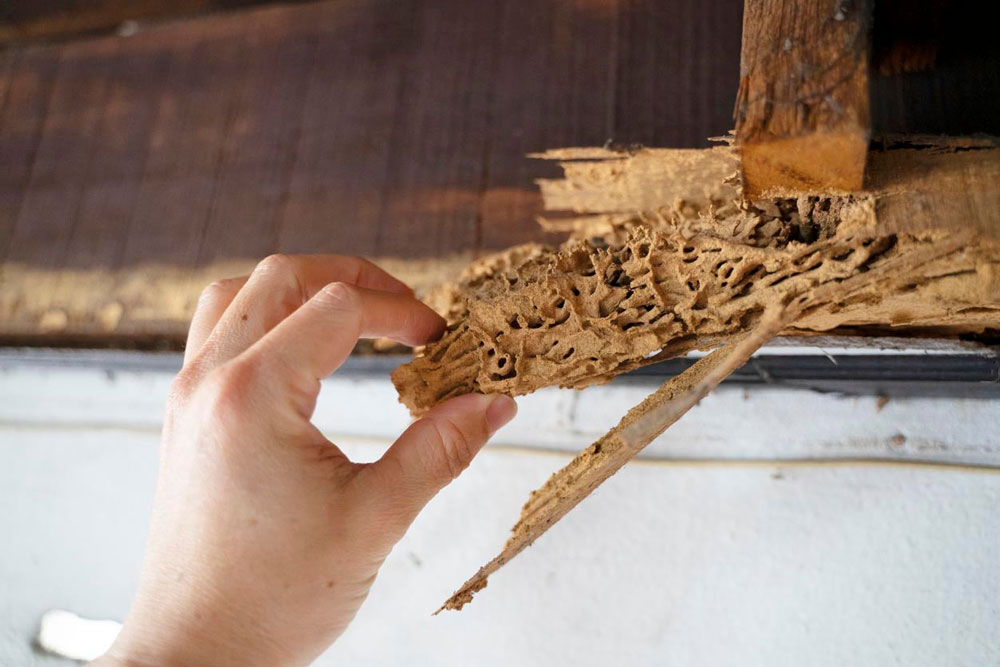Termite damage can be a homeowner’s worst nightmare, causing extensive structural harm to your property. These tiny but destructive pests can wreak havoc if left unchecked. In this comprehensive guide, we will cover everything you need to know about fixing termite damage. From identifying the signs of infestation to implementing effective treatments and preventive measures, we’ve got you covered. By the end of this article, you’ll be well-equipped to tackle termite damage head-on and protect your home.
Identifying Termite Damage
The first step in addressing termite damage is being able to recognize it. By the time you notice visible signs of termites, the damage may already be extensive.
Here are some key indicators to look out for:
Hollow-Sounding Wood
Tap on wooden surfaces in your home. It’s a telltale sign of termite damage if they sound hollow or papery. Termites eat wood from the inside out, leaving a thin veneer on the surface.
Mud Tubes
Subterranean termites often build mud tubes along walls or foundations. These tubes protect them from predators and maintain a controlled environment for their colonies.
Discarded Wings
During swarming season, termites shed their wings. Finding discarded wings around your home, particularly near windowsills and light fixtures, indicates a nearby colony.
Cracked or Bubbling Paint
Termites can cause paint to bubble or crack as they tunnel beneath the surface. Keep an eye out for these visual clues.
Sagging Floors or Ceilings
Severe termite damage can compromise the structural integrity of your home, leading to sagging floors or ceilings. This is a clear sign that immediate action is needed.
Preventing Termite Infestations
Prevention is key when it comes to termites. Protect your home by following these preventive measures:
- Maintain Proper Ventilation
Good ventilation in your home’s crawl spaces and attics helps keep humidity levels low, making your property less appealing to termites.
- Remove Wood-to-Ground Contact
Ensure that wood in and around your home does not make direct contact with the soil. Termites can easily access wood when it touches the ground.
- Regular Inspections
Schedule regular termite inspections with a professional pest control service. Early detection can save you from extensive damage.
- Eliminate Moisture Sources
Fix any leaks or sources of excess moisture in your home. Termites are attracted to damp environments
Treating Termite Damage
If you’ve discovered termite damage in your home, it’s crucial to take immediate action to prevent further destruction. Here are the steps you should follow:
Consult a Professional
Contact a licensed pest control expert to assess the extent of the infestation and recommend an appropriate treatment plan.
Termite Extermination
Depending on the severity of the infestation, your pest control professional may recommend various treatment options, such as bait stations, liquid termiticides, or fumigation.
Repair Structural Damage
After the termites have been eliminated, it’s time to repair the structural damage to your home. This may involve replacing damaged wood and ensuring your property’s structural integrity.
Prevent Future Infestations
Work with your pest control expert to implement long-term prevention measures to avoid future termite problems.
Repairing termite damage in your home is essential to prevent further structural deterioration and maintain a safe living environment.
Here’s a step-by-step guide on how to repair termite damage:
Materials You’ll Need:
- Safety gear (gloves, safety glasses, dust mask)
- Flashlight
- Termite treatment chemicals (if termites are still present)
- Wood filler or epoxy
- Sandpaper
- Wood primer
- Paint or stain (matching your existing finish)
- Paint Brushes or rollers
- Utility knife
- Chisel
- Hammer
- Screwdriver
- Plastic sheeting (to protect the area)
- Nails and screws (if needed)
- Replacement wood (if the damage is severe)
Guide
Step 1: Identify and Eliminate Termites (If Present)
Before you start repairing the damage, ensure that you have eliminated the termites causing the problem. Consult with a pest control professional to inspect and treat your home for termites.
Step 2: Safety First
Put on your safety gear, including gloves, safety glasses, and a dust mask, to protect yourself from any potential hazards.
Step 3: Assess the Damage
Use a flashlight to inspect the affected area thoroughly. Pay attention to the extent of the damage and determine whether the affected wood needs repair or replacement.
Step 4: Remove Damaged Wood
For small areas of damage, use a chisel and hammer to carefully remove the damaged wood. Make clean cuts until you reach structurally sound wood. For larger areas, you may need to replace entire sections of wood.
Step 5: Clean the Area
Remove any debris or termite residue from the area using a vacuum cleaner or a brush. Make sure the area is clean and free of any contaminants.
Step 6: Fill in Holes and Cracks
If the damage is not severe and you’ve removed only a small amount of wood, fill the holes and cracks with wood filler or epoxy. Follow the manufacturer’s instructions for mixing and applying the filler. Allow it to dry thoroughly.
Step 7: Sand the Repaired Area
Once the filler has dried, sand the repaired area to smooth it out and ensure it matches the surrounding surface.
Step 8: Apply Wood Primer
Apply a wood primer to the repaired area. This helps the paint or stain adhere properly and ensures a uniform finish. Allow the primer to dry according to the manufacturer’s instructions.
Step 9: Paint or Stain
Paint or stain the repaired area to match the surrounding wood. Use a brush or roller, and apply as many coats as needed to achieve a uniform appearance. Allow each coat to dry before applying the next
Step 10: Clean Up
Dispose of any waste materials and clean your tools and work area. Properly store any leftover materials.
Step 11: Prevent Future Infestations
Take steps to prevent future termite infestations by maintaining regular termite inspections, keeping wood away from the ground, and addressing any moisture issues in your home’s foundation.
Why Castle Construction Company Best for Termite Damage Repair
Castle Construction boasts a team of highly skilled professionals with years of experience in termite damage repair. They understand the nuances of termite behavior, allowing them to assess and address the damage effectively.
Cutting-Edge Technology
In the battle against termites, having the right technology is crucial. Castle Construction utilizes state-of-the-art equipment and innovative techniques to detect and eradicate termites swiftly. Their technology ensures that no termite goes unnoticed and that your property is thoroughly protected.
Tailored Solutions
Every termite infestation is unique, and Castle Construction recognizes this fact. They provide customized solutions tailored to your specific needs. Whether you’re dealing with subterranean or dry wood termites, Castle Construction has the expertise to tackle the problem head-on.
Eco-Friendly Approach
In today’s environmentally conscious world, Castle Construction stands out by offering eco-friendly termite damage repair solutions. Their treatments are designed to be effective against termites while minimizing harm to the environment.
Transparent Pricing
Castle Construction believes in transparency, and this extends to their pricing. You can expect fair and competitive rates for their services. Say goodbye to hidden fees and unexpected expenses.
Timely Response
When you discover termite damage, time is of the essence. Castle Construction understands the urgency and provides a prompt response to your inquiries. Their quick turnaround time ensures that your property is protected from further damage.
Customer Satisfaction
Castle Construction’s track record speaks for itself. They have a long list of satisfied customers who can attest to the quality of their work. Their commitment to excellence is unwavering, making them a trusted choice in the industry.
Conclusion
Fixing termite damage can be a daunting task, but with the right knowledge and action, you can restore your home’s integrity and prevent future infestations. Remember to identify the signs of termite damage, assess the extent of the problem, and take appropriate repair and preventive measures. Regular maintenance and professional inspections are key to ensuring that your home remains termite-free. By following these steps, you can safeguard your most significant investment and enjoy a termite-free living space for years to come.


